"It’s Ladies’ Day!" was how legendary commentator Dick Enberg used to greet tennis fans in the States when they tuned in to NBC’s coverage of the second Tuesday at Wimbledon. After watching the 2015 version, the phrase sounds a little quaint, doesn’t it?
This year the tournament’s second Tuesday began with a quick visit from the men on No.1 Court, where Novak Djokovic and Kevin Anderson finished their fourth-round match from the previous day. Once that was over, and the women’s quarter-finals began, fans were treated to the most fiercely entertaining afternoon of the fortnight thus far. These were the last eight players in the Ladies' draw, but there was nothing genteel, or decorous, or unduly modest about the way they competed. Serves were blasted, backhands were slugged, fists were pumped, noises were unleashed, tempers were flared, and matches were won, rather than lost.
In the days since the women’s World Cup ended, there has been a lot of talk in the US about the country’s new appreciation and respect for women’s sports. Hopefully, a few of those fans tuned into Wimbledon today; the women’s quarters were the perfect follow-up.
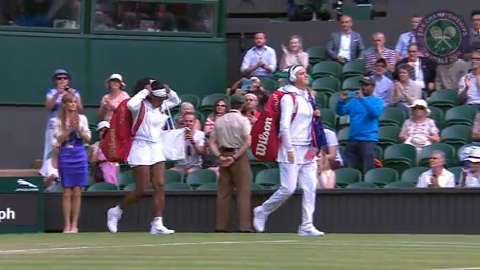
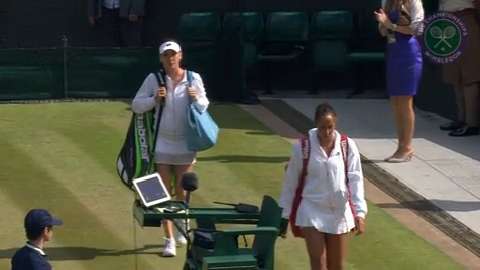
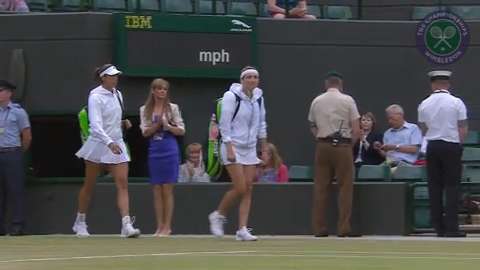
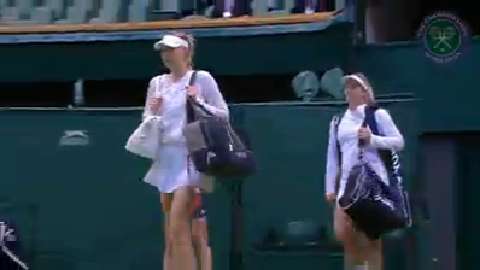
They began, fittingly, with someone new. Twenty-three-year-old CoCo Vandeweghe of the US was making her first appearance in a Grand Slam quarter-final, but you wouldn’t have known it by the way she dominated the rallies when she was playing well, or the way she sashayed across Centre Court between points. Sharapova had no answer for Vandeweghe’s serve, with its Samprasian rhythms, or her heavy topspin forehand. If CoCo got a hold of either of those shots, the point was over. When the Californian won the second-set tie-break and squared the match with a backhand winner, she raised her arms and demanded Centre Court’s applause.
All of which makes it more impressive that Sharapova still won the match. This was not the Russian at her best or most confident; this was not a case of her lasering winners at will. This was a match that Sharapova played the way she might carry an egg: Carefully, gingerly, one small step at a time. Her serve had a mind of its own –she double-faulted 10 times – and her forehand wandered into the alley as often as it found the corner. Sharapova, despite Wimbledon’s generous scoring system, committed more errors than winners. Yet when she needed to stop Vandeweghe’s momentum, at the start of the third set, Sharapova found a way to start constructing points, and found her way to a quick 3-0 lead.
Did Muguruza steal Kvitova's game?
While Sharapova was ending a newcomer’s run on Centre, two Wimbledon quarter-final rookies, Garbine Muguruza and Timea Bacsinszky, were hammering their world-class two-handed backhands at each other on No.1 Court. On balls hit down the middle, each tends to run around her forehand and hit her two-hander instead. This was a double-fisted fight, but it was Muguruza’s one-handed swings that lifted her above her opponent. She had the more powerful serve and the more reliable forehand.
Muguruza’s coach says that she finally discovered her grass-court game when she practiced with Petra Kvitova before this year’s event. Did she discover her own grass game, or did she take Kvitova’s from her? The Spanish No.20 seed, instead of the second-seeded Czech, has a spot in the semis now. And while she takes a full-blooded cut at the ball during points, she walks regally between them. Even her celebratory collapse to the court, which is becoming her trademark at Wimbedon, has a tumbling grace to it.
Keys locked out by Radwanska
If Muguruza and Bacsinszky brought a mirror-image quality to No.1 Court, the next quarter-final there, between Agnieszka Radwanska and Madison Keys, was a pure contrast in style. To summarise: Keys belted the ball, and Radwanska ran after it. For the American, the challenge was risk management; she had to take enough risk to hit the ball past Radwanska, but not so much that she sent the ball out. For Radwanska, the challenge was positional: Where could she, in the time that she had to react, put the ball that would bother Keys the most?
The result mostly rested on Keys’s racket. She hit 12 aces to Radwanska’s one, and 48 winners to Radwanska’s 13. She also – and this was the deciding stat – committed 40 errors to Aga’s seven. The two played to a standstill at 3-3 in the third, before everything went Radwanska’s way. She held after a long struggle, watched as Keys played an error-filled game at 3-4, and finished the match in characteristic Aga style, with a deft wrong-footing forehand that left Keys splayed on the grass. Radwanska has bounced back from a poor first half of the year, and into her third Wimbledon semi-final.
Fist-pumping fest that had everything
That left the main event for Centre Court: Serena Williams versus Victoria Azarenka. Here was the champion of the women’s game against her foremost challenger of recent years.
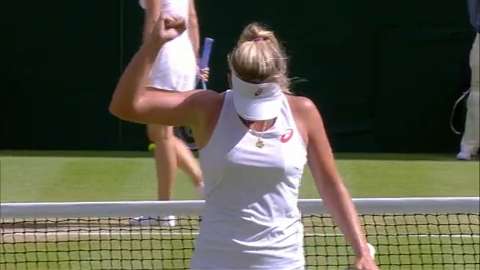
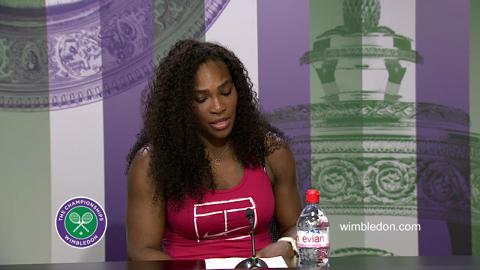
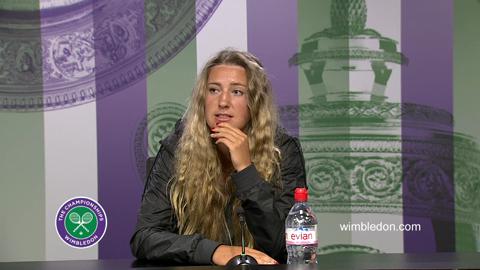
The two had played twice in the spring, and both times Serena had rallied from what looked like certain defeat to win. Now Azarenka, who has been slowly putting her game back together after a long lay-off last year, was determined to take the final step, while Serena, who started the day 10 wins from a calendar-year Grand Slam, was equally determined to stop her. Their collision produced the match of the fortnight so far.
It began with Azarenka at full throttle, and both of them in full throat. The Centre Court audience tittered at the shrieks the two women emitted, and then gasped when they saw the shots they created. Eventually, the titters subsided, and only gasps remained. The match, it became clear to everyone, was no laughing matter. Its constant stream of shrieks and fist-pumps and “Come on!” signaled that this was tennis in its rawest, truest, most overtly competitive form, with its old-fashioned masks of politeness torn away. Williams-Azarenka may not have been an argument for grunting, but it did make the strongest case yet that complaining about it has become beside the point. Who would have asked, or wanted, these two ladies to hold anything back today?
In the end, the match served, as so many have in the past, as another showcase for what makes Serena such a special athlete. Azarenka’s level was so high through the first set-and-a-half that the only thing Serena could do was take the racquet out of her hand. So she did.
Serena finished with 17 aces and 46 winners against just 12 errors. When Azarenka refused to back down in the third set, and continued to fire herself up, Serena looked across the net and knew what she had to do. She started her next service game with three aces, and finished it with a point-ending forehand.
Even in defeat, the match bodes well for Azarenka’s future. As for Serena, by the end, as the winners detonated off her strings, I thought this win would make an appropriate message to the distant future. Put a tape of this match in a time capsule, and let tennis fans centuries from now get a good look at what she was all about.

